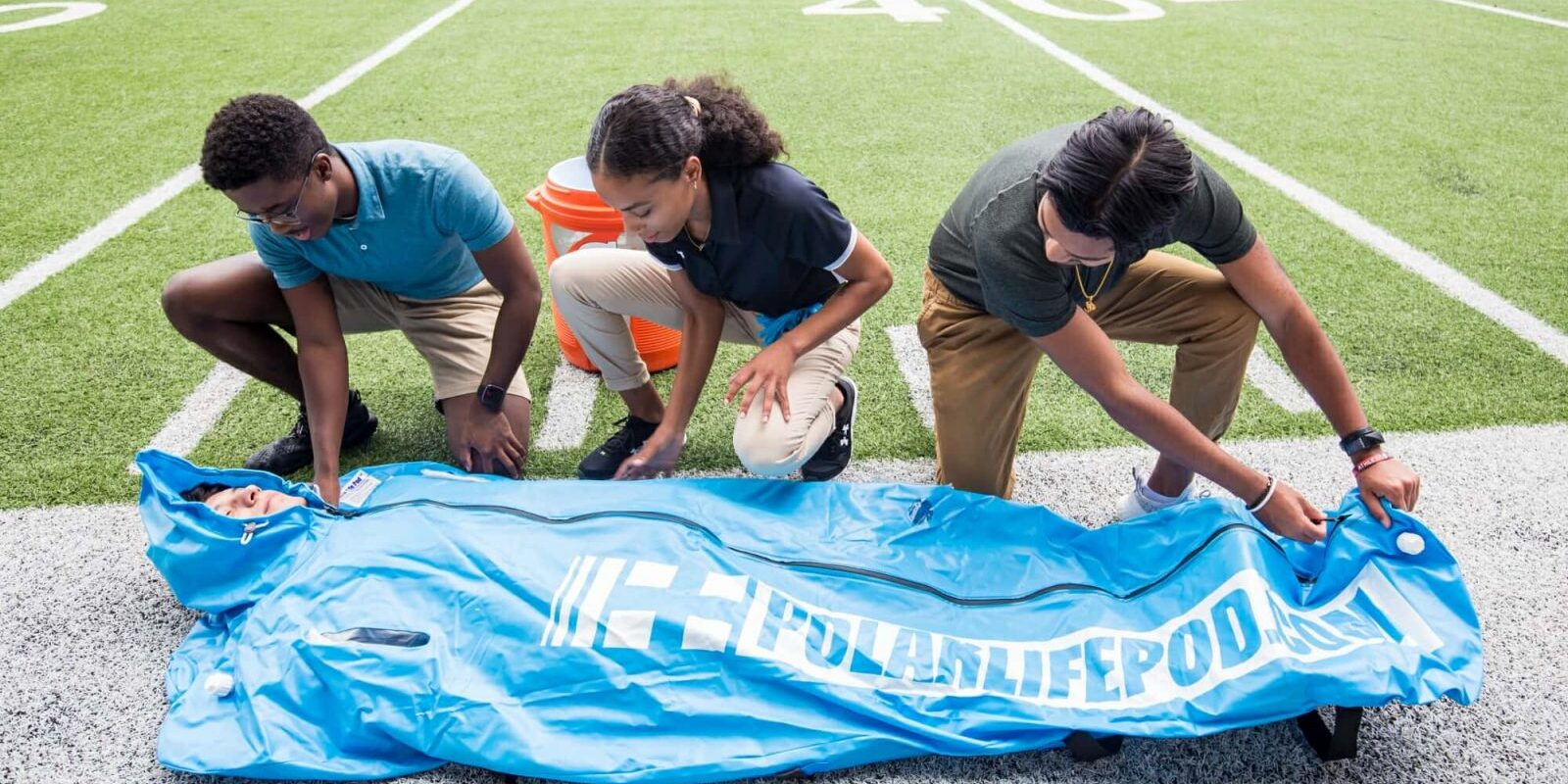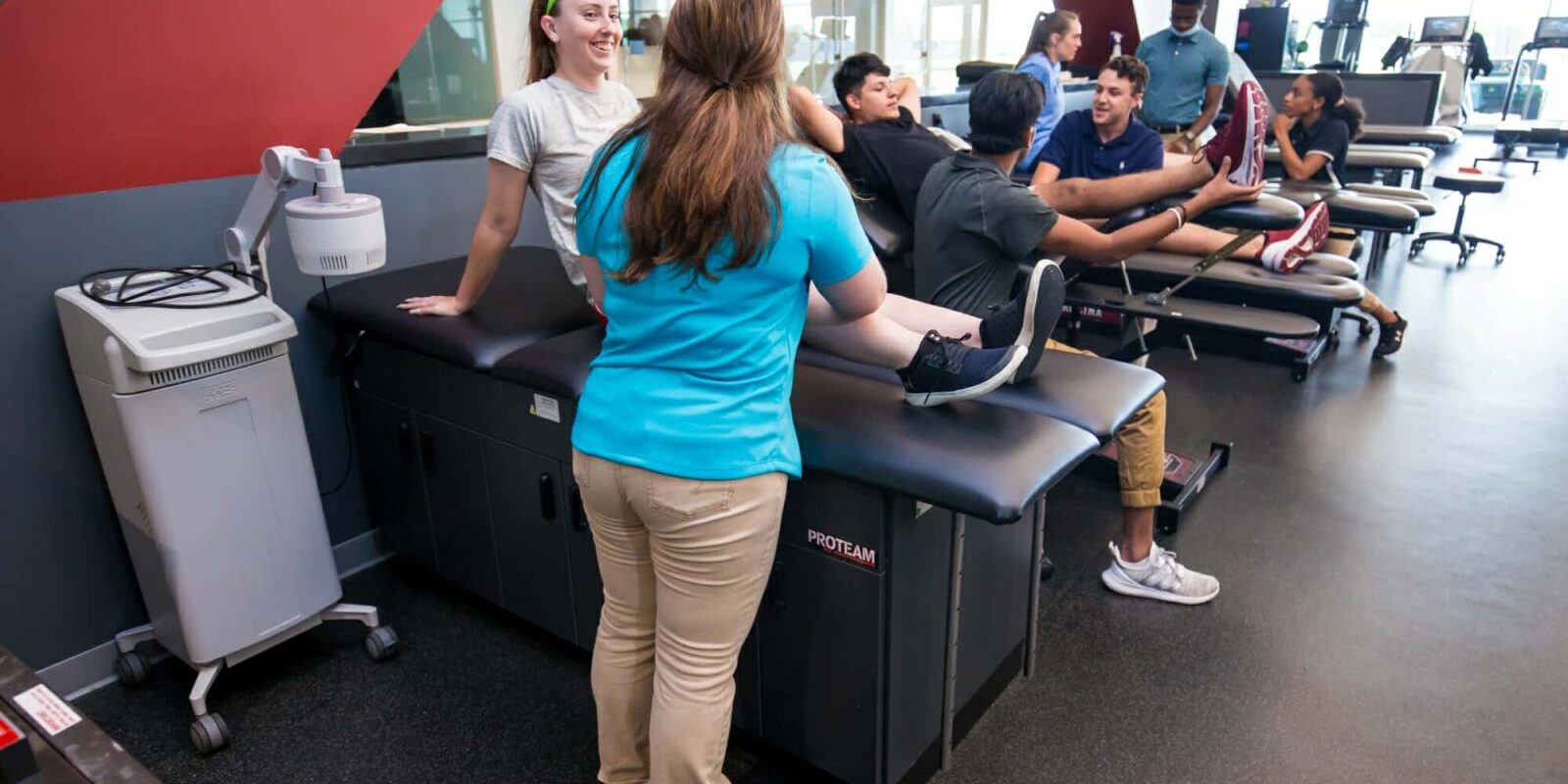
From High School, College, Another Career, Or International Work Experiences
If you're still in high school and know you want a career as an athletic trainer you can either choose an undergraduate major that supports your desire to complete a master’s degree in Athletic Training or an undergraduate-entry option into an accredited master’s degree-level athletic training program to get a head start in pursuing the AT profession.
If you have a bachelor’s degree in any discipline and are a recent or not-so-recent graduate, you can complete an accredited, entry-level master’s degree program to begin your journey in the career path. Post-baccalaureate professional programs are usually 2 years long and require full-time enrollment. You will need to complete prerequisite courses, which will minimally include biology, chemistry, physics, psychology, anatomy, and physiology.
No matter where you are in your career or your education, there's a path to becoming an Athletic Trainer.

Elements to Becoming an Athletic Trainer
If you're excited by the idea of working in healthcare to help patients maximize their potential, there are several things you should do before applying for admission to an accredited Athletic Training program.
The first is to understand the three elements of becoming an Athletic Trainer. Once you understand the basic steps to entering the field, you need to prepare your application materials and think about how you'll pay for school.
Becoming an Athletic Trainer is a multi-step process. First you need to complete an Athletic Training degree program that has been accredited by the Commission on Accreditation of Athletic Training Education.
The second step is to take the certification exam offered by the Board of Certification for the Athletic Trainer, the BOC exam. This covers the content areas such as therapeutic intervention, injury and illness prevention, health care administration and professional responsibility, immediate and emergency care, and examination, assessment and diagnosis.
As a final step, you need to obtain an Athletic Training license (or equivalent credential) from your state to legally practice. All states except California have this requirement.

Find Your Athletic Training Program
First, determine which type of program works for you. If you’re in high school, you may be interested in a program that accepts students as undergraduates with guaranteed admission to the master’s degree program if matriculation requirements are met. These programs are often accelerated, with both a bachelor’s and master’s degree completed in 5 years.
If you already completed your bachelor’s degree or will do so in the coming year, you can apply to an accredited program with post-baccalaureate entry. These programs welcome applicants with a bachelor’s degree in any area as long as prerequisite courses and other application requirements are met.
International students can also apply to CAATE-accredited programs. If English is not your first language, you may be required to submit TOEFL or IETLS scores to demonstrate language proficiency.
Be clear about what type of program you need to complete so that you can narrow down your list of schools accordingly. Our global program map will help you find programs by location and type so you can start building a list of target programs.
Research each program carefully and determine which ones are closely aligned with your goals, academic experiences, and educational desires. Then you can review program-specific requirements, polish your interview skills, and submit applications.

Talk to People
The best way to really get to know the ins and outs of a program is to talk to people. Program representatives are eager to talk about their programs, so reach out and connect. Current students and recent alumni can provide excellent insider information. Use your informational interviewing skills to get a grasp on what the AT program is really like to help you gauge if this would be a good fit for you. Even if you don’t end up going to that particular school, at least you made a new connection in the athletic training field. It never hurts to grow your network.
Open Houses
If you’re not yet ready to apply, the extra time can be spent attending a virtual or in-person open house, information session, or campus visit at your preferred schools. This is an opportunity to make sure you like each campus and could see yourself completing an AT program there.
Job Shadowing
If you don't know a practicing Athletic Trainer, contact an AT in your community and ask for permission to shadow them as they perform their job duties. To find an Athletic Trainer, look at local colleges, performing arts venues, and medical practices that may have an AT or may refer you.
This step may take a few tries before you find someone who has the time to work with you, so start this process as early as possible. Starting early can also help you ensure you complete the minimum number of shadowing hours, an admissions requirement for some programs. Planning this early keeps you ahead so you can get started on a schedule that would work best for you. Keep track of the time you spend shadowing, as some programs require that you submit verification of a certain number of hours.
